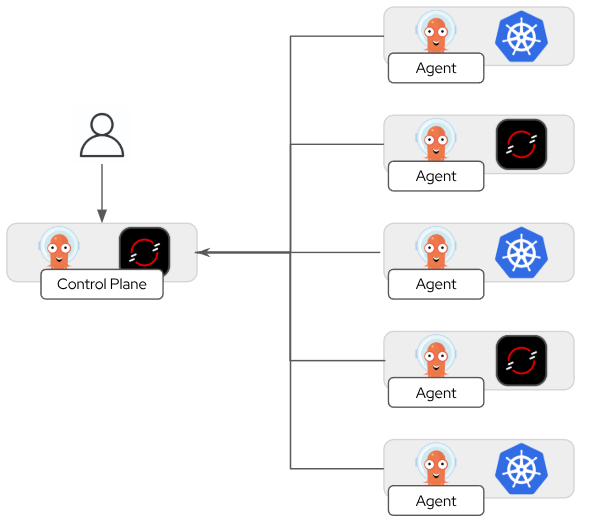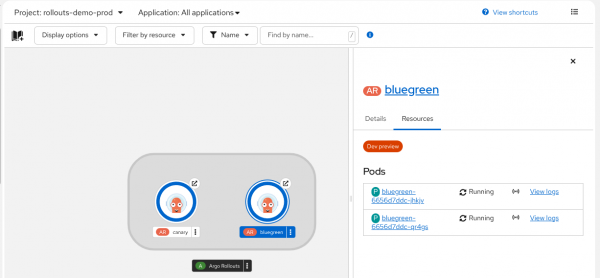GitOps has continued in its popularity and has become the standard way to manage Kubernetes cluster configuration and applications. Red Hat continues to see the widespread adoption of the GitOps methodology across our portfolio as customers look for ways to increase efficiency in their operations and development teams.
Red Hat is pleased to announce that version 1.17 of OpenShift GitOps has been released, bringing with it some exciting new capabilities.
New in version 1.17
Argo CD Agent (Technical Preview)
This release includes an exciting new feature, the Argo CD Agent, as a Technical Preview feature. This provides a distributed model for its components while maintaining a single pane of glass for management combining the best of centralized and distributed topologies.
The Argo CD Agent enables the UI/API Server component to be run on a centralized Control Plane while the Agent and other components, such as the application-controller, can be spread across the managed clusters for improved scalability.

In this release the Principal, which runs on the Control Plane, is managed by the OpenShift GitOps operator while the Agent can be installed on managed clusters using the provided Helm chart. Future releases will provide additional features as well as tighter integration with Red Hat Advanced Cluster Management (RHACM).
OpenShift Console Topology Rollouts (Developer Preview)
This release includes the ability to view Argo Rollouts in the OpenShift Console Topology view enabling easier management and visibility of Rollouts in the OpenShift Console. As this feature progresses to General Availability additional capabilities will be added, feedback from users is greatly appreciated.
Note: This feature requires OpenShift 4.19.6 or higher in addition to OpenShift GitOps 1.17.

Operator Managed Keycloak Deprecated
OpenShift GitOps provides the ability for the Operator to deploy and manage a per Argo CD Keycloak instance by specifying it in the ArgoCD Custom Resource (CR). This feature was not heavily utilized as users prefer installing and managing a centralized Keycloak as part of a broader SSO solution or using Dex for integration with OpenShift Authentication.
This feature is deprecated in OpenShift GitOps 1.17 and will be removed from a future release.
Argo CD 3.0 Available
With this version, Argo CD has been upgraded to 3.0 which brings a number of new features and benefits.
Note that in Argo CD 3.0 there are changes to default configuration options as well as new features that may result in breaking changes when compared to Argo CD 2.14 that was shipped in the previous releases of OpenShift GitOps. The upstream documentation includes a guide for migrating from Argo CD 2.14 to Argo CD 3.0.
As a result, this release of OpenShift GitOps prioritizes compatibility with Argo CD 2.14 for some of these changes in defaults. Users can of course opt to enable these changes and it is anticipated that the new defaults will be adopted over future releases. Please review the release notes here for a list of breaking changes.
View more information about the Argo CD 3.0 release in the following blog with detailed release notes here.
Conclusion
OpenShift GitOps 1.17 is a significant update with many new features, to learn more about this update please review the official documentation and release notes.
